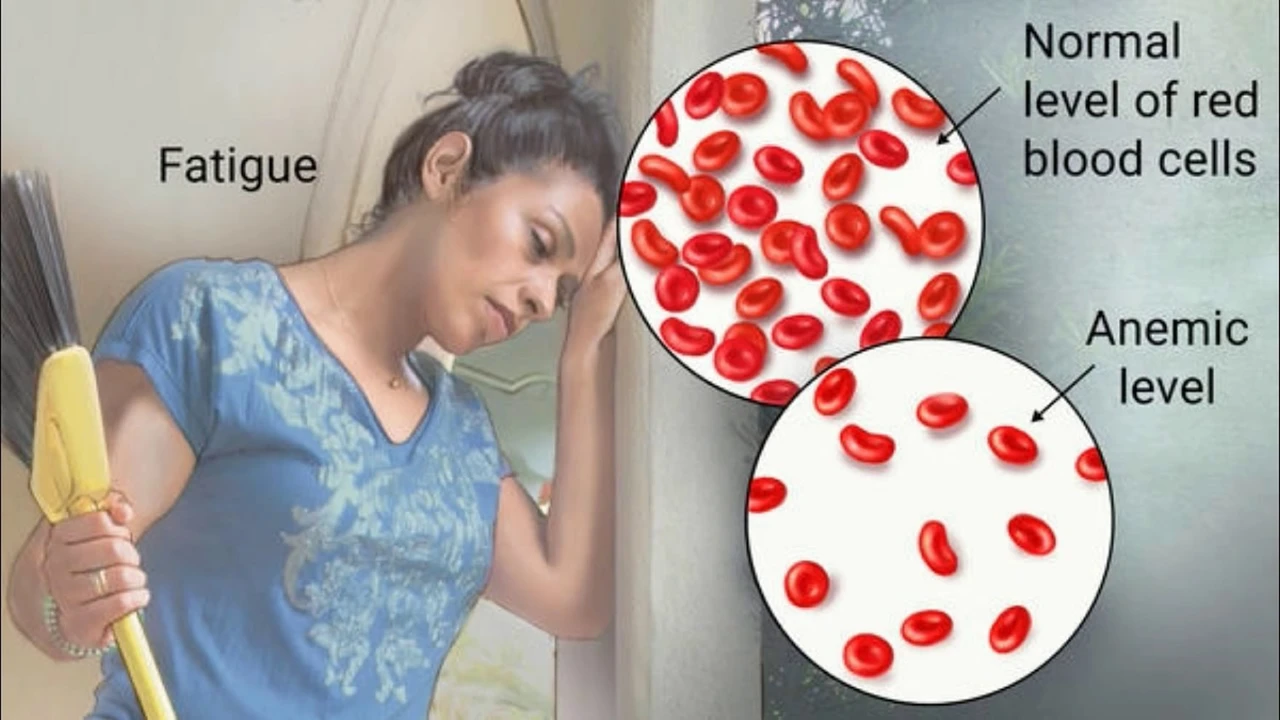Feeling tired all the time? Notice your skin looking a bit paler than usual? Those could be clues your body is low on iron. Anemia isn’t a mystery; it shows up in everyday ways. Below we break down the most common signals, why they happen, and what you should do next.
Constant fatigue – If you’re dragging yourself out of bed even after a solid night’s sleep, low red blood cells might be the culprit. Your blood isn’t carrying enough oxygen, so every task feels heavier.
Pale skin and nail beds – Look at the inside of your lower eyelids or the flesh under your nails. A lighter pink or almost white shade often points to anemia.
Shortness of breath – Climbing a flight of stairs or even walking a short distance can leave you winded. Your heart works harder to push oxygen‑rich blood around.
Dizziness or light‑headedness – Standing up quickly and feeling a spin? That drop in blood pressure can be tied to low iron levels.
Headaches – When your brain isn’t getting enough oxygen, you might get frequent, dull headaches that don’t go away with simple pain relievers.
Cold hands and feet – Poor circulation because of fewer red blood cells can make your extremities feel chilly, even in a warm room.
Cravings for non‑food items – Known as pica, craving ice, dirt, or chalk is a classic but often overlooked sign of iron deficiency.
If you notice two or more of these symptoms persisting for more than a couple of weeks, it’s time to talk to a doctor. A quick blood test can confirm whether you have anemia and, if so, what type.
During the visit, ask about:
While waiting for results, consider simple diet tweaks: add more leafy greens, beans, red meat, or fortified cereals. Vitamin C (like a squeeze of lemon) helps your body absorb iron better.
Remember, anemia can be mild and easily fixed, but ignoring it can lead to bigger problems like heart strain. So, if you’re feeling unusually wiped out, take those symptoms seriously and get checked sooner rather than later.
Bottom line: Your body gives you clear hints when iron is low. Spotting the signs early means you can act fast, feel better, and keep your energy up. Stay aware, listen to what you feel, and don’t hesitate to ask a health professional for a quick test.

I'm absolutely amazed, and not in a good way, by how anemia can impact our elders. It's not just about feeling tired or having low energy, this medical condition has several risks and symptoms that we need to be aware of. As we dive into this topic, we're going to reveal just how anemia can affect the elderly, and most importantly, the strategies we can employ to manage it. So, if you're caring for an aged loved one or know someone who does, join me as we explore this topic because knowledge is power, especially in dealing with health-related issues.
Read More